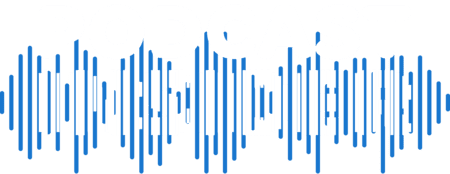Podcast: Play in new window | Download (Duration: 12:36 — 17.3MB) | Embed
 Welcome back to Podcast Insider, today we’re discuss how podcast consumption has changed in the post-pandemic world—especially as more people continue to work from home.
Welcome back to Podcast Insider, today we’re discuss how podcast consumption has changed in the post-pandemic world—especially as more people continue to work from home.
The days of relying on commute-time listening are fading. With data from Edison Research and Jacobs Media, we’re exploring where podcast listening is happening now, how habits are shifting, and what it all means for creators looking to stay relevant.
Whether you’re publishing weekly or still finding your audience, this episode will help you understand today’s podcast listener and how to meet them where they are—likely at home.
Today’s Hosts: Todd Cochrane and MacKenzie Bennett
Part of the changes that have come to podcast creation, listening and watching has been from the major shift to working from home. There’s clear data on some of these changes that we’ll go over with you all today.
The pandemic triggered a massive shift in work culture—and podcast consumption patterns followed suit. As more people work from home and spend less time commuting, the where, when, and how of podcast listening have changed significantly.
Here’s what current data reveals, and what podcasters need to know to stay relevant in this new environment.
🏡 Home is Now the Primary Listening Environment
Before the pandemic, podcasting was strongly associated with commuting. Today, that’s no longer the case.
According to Edison Research’s Share of Ear, more podcast listening now occurs at home than anywhere else. As of their latest data:
- More than half of podcast listening happens at home.
- Only 11% of podcast listening occurs in the car, a major drop from pre-pandemic levels.
- 16% happens at work—reflecting that many remote workers now blend podcasts into their daily home routine.
This marks a fundamental shift: home has replaced the commute as podcasting’s top listening location.
🚗 The Decline of Commute-Time Listening
Fred Jacobs of Jacobs Media has observed a significant shift in audio habits during commuting:
A RAIN News article cites Jacobs Media’s TechSurvey, revealing that in‑car broadcast radio listening dropped from about 62% in 2018 to just 56% in 2022, marking it as an “all‑time low” for drive‑time audio, learn more here. Jacobs emphasizes:
“In‑car listening—while rebounding—is still well below pre‑pandemic levels.”
Despite some commuters returning to offices, the rise of remote and hybrid schedules has disrupted consistent “drive‑time” spikes. With erratic commuting habits, podcast creators and broadcasters can no longer count on the traditional “drive time” bump to deliver peak listenership.
📈 Overall Podcast Listening Is Still Growing
Despite the shift in listening environments, podcasting as a medium continues to thrive.
Edison’s Infinite Dial 2025 reports that:
- 55% of Americans (12+) listen to podcasts monthly—up from 42% in 2020.
- The total U.S. audience is now estimated at 210 million people.
So while the “when” and “where” may be changing, the “how many” is still moving upward.
🖥️ Key Behavioral Shifts for Podcasters to Consider
Given these changes, here’s how podcast creators can adapt:
1. Reimagine When You Release
- Consider scheduling episodes around midday or early evening, when listeners are more likely to engage from home.
2. Create for Multitasking Moments
- At-home listeners are often cooking, working out, or doing household chores.
- Podcasts that feel conversational or companion-like may perform better.
3. Offer Video Options Where Possible
- Platforms like YouTube and Spotify are driving hybrid podcast/video consumption.
- Video adds a visual dimension and can increase discoverability.
4. Promote Across Multiple Channels
- No commute = less routine = more need for reminders.
- Email, social media, and smart speaker integrations can help reinforce new listening habits.
🔄 What This Means for Podcast Growth Strategy
While some old norms are fading, new opportunities are emerging. The rise in home listening offers flexibility in format, deeper engagement, and space for experimentation with content length and delivery.
Podcasters who understand and adapt to these behavior shifts will continue to thrive—even as the car becomes a less dominant player in the podcasting experience.
📚 Sources & Further Reading:
- Edison Research – Most Podcast Listening Is at Home
- Edison Research – The Infinite Dial 2025
- Jacobs Media – Podcasting in the Post-COVID Era
Thanks for listening to Podcast Insider, you can subscribe to new episodes out every Monday.
The best place for support with any Blubrry product or service is our ticket system. Tickets give the whole team access vs. direct emails or calls. General podcasting discussions and more can be shared on the Blubrry Podcasting Facebook group.
Fill out our listener survey at surveys.blubrry.com/podcastinsider
Hosting customers can schedule a one-on-one call with Todd or a tech checkup with Mike at todd@blubrry.com and mike@blubrry.com
Stay tuned for more episodes and visit our website for the latest updates and resources.





